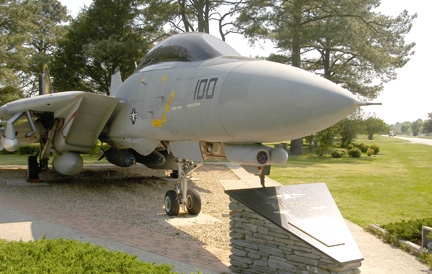 NAS Oceana Quarterdeck
NAS Oceana Quarterdeck
(757) 433-2366
NAS Oceana Public Affairs Office
(757) 433-3132
Media Inquiries
(757) 770-6158
Directions to NAS Oceana
Your first approach to the Air Station is from Interstate 64 East or West. From 64, take 264 East to First Colonial Road, Exit 21A. Proceed on First Colonial past Virginia Beach Blvd. First Colonial becomes Oceana Blvd. Follow Oceana Blvd for the next 4 miles, passing the Oceana Stables. The next right will be Tomcat Blvd., which leads to the main gate. The Pass and Decal Office is the first building on the right once you are on Tomcat Blvd. and prior to getting to the gate.
Public Tours
NAS Oceana, home to over 300 aircraft with an airfield operating 24 hours per day, 365 days a year, supports U.S. Department of Defense aviation requirements. Due to mission requirements, the installation does not offer public tours.
If you would like to visit the base, consider attending the annual NAS Oceana Air Show, held in September. For more information, visit the NAS Oceana Air Show Facebook page (https://www.facebook.com/OceanaAirShow/) or the Naval Air Station Oceana Facebook page (https://www.facebook.com/NavalAirStationOceana/).
Squadron tours may be requested through the CNAL Tour Website (https://www.airlant.usff.navy.mil/Tour-Requests/).
Thank you for your continued support of our men and women in uniform.
Aviation Historical Park
The Aviation Historical Park, located inside the Main Gate on Tomcat Blvd, is open daily to military, DOD employees, and valid military ID-holders. The park includes 12 aircraft on display.
Observation Park
The POW/MIA Flame of Hope Memorial Park, located on Oceana Boulevard, is outside the installation and open to the public. This location offers views of the aircraft during launch and landing.
Flight Operations and Noise Concerns
Flight Operations at Naval Air Station Oceana and Naval Auxiliary Landing Field Fentress are conducted around the clock seven days a week. The airspace that Oceana normally operates in covers a 4.3-mile radius and like civilian aircraft, there is not an established limitation to where military aircraft can fly.
There are no curfews. In fact, a significant portion of training is required to occur at night. Flight training is tied to aircraft carrier schedules. This can result in multiple squadrons preparing for sea at the same time.
There are noise abatement procedures in place. These include restricting the use of afterburner, raising flight patterns, and requiring only straight-in approaches after 10:00 p.m.
If you have a noise concern, you can contact the Flight Operations and Noise Concerns department at
(757) 433-2162 or email: OceanaComments@navy.mil and provide the following information:
· Date
· Time
· Name
· Address
· City/State/Zip code
· Neighborhood
· Nature of your complaint
NOTE: Comments will not affect air operations as they are being conducted.